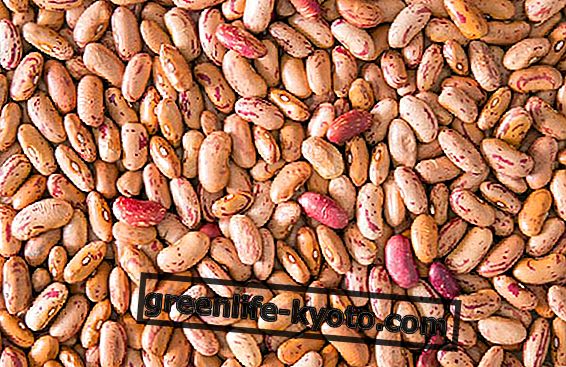
The wild rose is also known as the wild rose and we will certainly have seen it on some walks in the woods. The pink and white flowers have simple petals and a light fragrance of rose.
Their flowering begins like all roses from May and ends in summer. Subsequently from the autumn we find on the plant the transformation of the flower into bright red berries.
In mid-winter these berries are still attached to the now leafless plant and are one of the few foods for little animals and birds that still look for something in the snow to be able to feed themselves.
The rose hip in addition to helping animals in winter is also excellent for humans as a remedy against seasonal ailments typical of the cold period such as colds, flu, colds and coughs.
Dog rose products
Both the flowers and the red berries are used of the dog rose, although mainly the use of the fruits is more common both in the herbal tea version and as a hydro-alcoholic mother tincture.
Even the bud rose bud derivative is excellent and is taken in drops at least 3 times a day in a little water to drink.
In addition, the wild rose is used to prepare jams and jams as well as liqueurs and elixirs for both food and health purposes.
Even natural cosmetic products often contain the extract of dog rose which is used to keep the skin luminous, soft and healthy.
Dog rose: vitamin C and phytocomplex
The red fruits of the dog rose are rich in vitamin C even up to 100 times that found in citrus fruits.
This conspicuous presence of this vitamin C is the excellent point of dog rose and it is this vitamin that is used by our body to support and strengthen the immune system.
Ascorbic acid, another name for vitamin C, is an excellent antioxidant and is also used to combat the main free radicals responsible for the cellular aging of the body.
The use of wild rose therefore, thanks to the conspicuous presence of vitamin C, helps to keep the body young and healthy. Furthermore, ascorbic acid acts on the blood circulation with a protective action towards the arteries and veins.
We remember however that the vitamin C is thermolabile and therefore it easily comes last if we submit the fruits to high temperatures. The best way to preserve all the vitamin C is to eat fresh berries.
In addition to this vitamin C, dog rose is rich in B vitamins such as B1 and B2 but also in vitamins A, P and K. Its phytocomplex contains many other active ingredients such as polyphenols, flavonoids, tannins, essential oil, anthocyanins and carotenoids in addition to some mineral salts.
Properties of dog rose
The dog rose therefore has the ability to prevent cough and cold as well as being a natural anti-inflammatory.
This anti-inflammatory action reaches every part of the body and in particular towards the respiratory system which is the one most affected by winter illnesses.
In addition, the anti-inflammatory action acts on the gastrointestinal level and on the urinary tract in which a good diuretic action of the dog rose is also added.
The dog rose is also used for the treatment of joint pains which also increase precisely in the cold period. Its use is also recommended in cases of allergy because it contains substances with an antihistamine action.
The petals of this dog rose and also the extract are excellent to help in skin problems . Furthermore, its phytocomplex and the presence of vitamin C always supports the epithelial tissue rejuvenation systems and even acts in case of small lesions, stretch marks or other skin blemishes.
The dog rose is also a purifier of the skin and not only of it but of the whole body. Finally, for the skin the dog rose is an excellent emollient, astringent and healing.
Dog rose has an immunomodulatory and immunostimulatory effect that is able to fight the symptoms of winter ailments in particular those we know as cooling illnesses: sore throat, cold, cough and infleunza.
Dog rose thus becomes a tonic to use as an ally during the season changes to combat stress and fatigue. The remedies based on rose hips help to regulate the daily biorhythm favoring rest and night relaxation while during the day it activates the energy and gives tone to the whole organism.
Dog rose herbal tea
The preparation of a wild rose tea is simple and you just need to get the red berries from this shrub. We can easily buy them in herbalist shops already dried and shredded so that they are ready for use as herbal tea.
Two teaspoons of dried dog rose are enough to be immersed in 200 ml of water previously boiled. We will leave the dog rose in infusion for at least 8 minutes and then we will filter.
We will be able to sweeten it with honey so as to also add its beneficial properties against winter illnesses.
This herbal tea can be taken one to two times a day and can be thought of or prevented by starting to drink the wild rose tea every day as early as the end of autumn or we can start with the very first symptoms of flu, mal of throat, cold, cough or feeling of little energy without waiting for the ailments to get too full.
Fresh dog rose
If you are lucky enough to be able to collect fresh rose hips then surely the health benefits will be greater. The red fruits can be eaten so naturally and have a sweet and sour taste at the same time but very interesting and appreciable.
In addition, the dog rose can be added to centrifuged or extracted, such as together with fruit such as apple, which is also typical of this season or a vegetable such as carrot.
Fresh dog rose can also be added to smoothies or to other dishes, remembering that they should not be cooked at high temperatures so as not to lose the precious vitamin C and other nutrients.
Read also the benefits of wild rose >>













